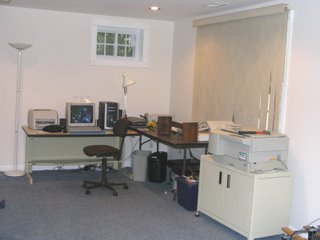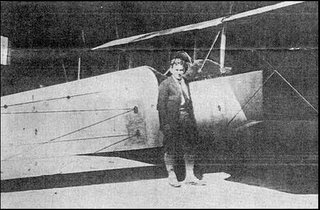Well here I am responding to a tag from
DamselFish. A
meme (rhymes with theme) tag. I didn’t have any idea what a meme might be so I searched back across the blogs and discovered: an idea, a thought that gets conveyed but may mutate in the process.
The original tag from Paul via
eninnej was to state what five resources - online or otherwise - would you point people to, if you wanted to give them an entry into your field of expertise?
First I must first say that I am retired. I was, and for that matter still am, an Economist whose major area of interest is in government policy related to agriculture.
If one were to feel that this was their major calling then to enter this field they mst first have, as a minimum, a BS and Masters or, preferably, a BS and PhD in Economics or Agricultural Economics. I presume that within this level of education you have fields of study in International Trade, International Development, Statistics, Agricultural Policy, Resource Economics, Environmental Policy and Agricultural Finance.
As to Resources:
1. A fundamental online resource can be found in the Core Historical Literature of Agriculture collection at Cornell University's
Albert R. Mann Library which offers free electronic access to back issues of AJAE for years 1919 through 1995. To access the 1919-1967 issues of the Journal (at that time called the Journal of Farm Economics) can be accessed here. The Journal's back issues from 1968 through 1995 are available there. Electronic back issues of AJAE for the years 1919 through 1999 are available at www.jstor.com to members who are at institutions that participate in JSTOR's Art & Sciences Complement Collection. A list of participating institutions can be found here.
2.
Choices Magazine published by the American Agriculture Economics Association (AAEA) provides current thinking by University and Government Economists on issues related to food, agriculture, resources and development.
3.
EuroChoices was launched in 2001 by the Agricultural Economics Society (A.E.S.) and the European Association of Agricultural Economists (EAAE). EuroChoices main aim is to bring current research and policy deliberations on agri-business and rural resource issues to a wide readership, both technical & non-technical.
4.
Resources for Economists on the Internet “This guide is sponsored by the American Economic Association. It lists 2,100 resources in 97 sections and sub-sections available on the Internet of interest to academic and practicing economists, and those interested in economics. Almost all resources are also described. Those searching the Internet for economic information might also wish to try the Economics Search Engine (ESE). It indexes 300,000 pages on 10,000 economics web sites from around the world. Searches with it only return their contents”.
5.
Agricultural Statistics, USDA, National Agricultural Statistics Service -- provides links to the electronic version of this publication starting in 1994




 This is the same style as my 1954 Plymouth that I bought in may 1958 for $600. Mine was Blue and White.
This is the same style as my 1954 Plymouth that I bought in may 1958 for $600. Mine was Blue and White.
 Here is a picture of the 1962 Rambler American like we had when we moved to Maryland
Here is a picture of the 1962 Rambler American like we had when we moved to Maryland Here is the 1964 Malbu like the one we had before the 1972 ford
Here is the 1964 Malbu like the one we had before the 1972 ford
 Clarion Airport was named for pioneer pilot Parker D. Cramer, shown beside one of the planes he flew in and out of the original airport, in the shadow of the hangar built there under joint federal and community auspices. The flying field (the first municipally-owned one in the United States) was later named in Cramer's honor after he and his crew were lost on a route-mapping flight over the North Sea. Cramer once flew a plane through this hangar, from end to end.
Clarion Airport was named for pioneer pilot Parker D. Cramer, shown beside one of the planes he flew in and out of the original airport, in the shadow of the hangar built there under joint federal and community auspices. The flying field (the first municipally-owned one in the United States) was later named in Cramer's honor after he and his crew were lost on a route-mapping flight over the North Sea. Cramer once flew a plane through this hangar, from end to end.

